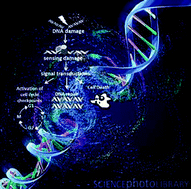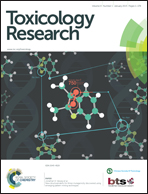Cellular response to the genotoxic insult: the question of threshold for genotoxic carcinogens
Abstract
Maintenance of cellular integrity is crucial for its physiological function, which is constantly threatened by DNA damage arising from numerous intrinsic and environmental sources. By transcribing the genetic information stored in the intact DNA, RNA polymerase II generates mRNA that instructs ribosomes to produce specific proteins. DNA damage leads to interruption of mRNA synthesis with the potential production of unstable transcriptions and proteins. DNA damage results in mutations with the possible consequence of cancer. To protect their integrity, eukaryotes including mammalian cells have developed different mechanisms including DNA damage response (DDR) to ensure protection of the genome. DDR identifies DNA lesions and, depending on the severity, triggers different responses. Mild DNA damage is normally managed by DNA repair; more severe or irreparable DNA damage triggers the induction of cell death programs such as apoptosis or necrosis. Although these defence mechanisms are increasingly being understood, the critical and rate limiting parameters and their dose–response to the insulting agent are poorly evaluated. From a toxicological point of view such information is essential to accept the existence of a threshold for genotoxic carcinogens. By describing the different cellular defence mechanisms and their regulation we intend to stress the need for such information to further evaluate the plausibility of a dose-dependent threshold mechanism of genotoxic carcinogens. Besides its scientific value, a better understanding of cellular defence and the onset of such counterbalancing reactions is of regulatory importance since a scientifically defendable threshold concept for genotoxic carcinogens will allow identification of the NOAEL and the derivation of health-based exposure limits.


 Please wait while we load your content...
Please wait while we load your content...